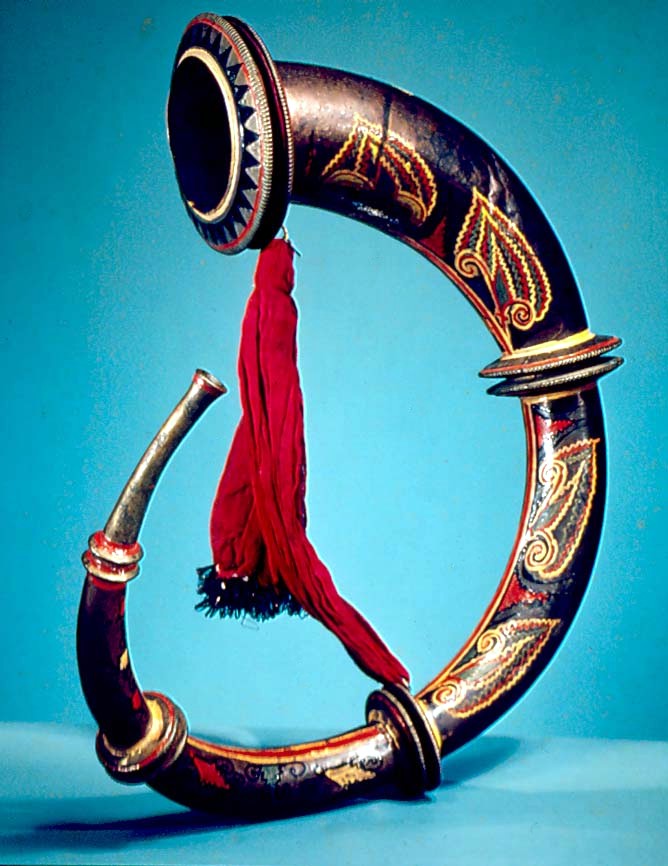Sringa on:
[Wikipedia]
[Google]
[Amazon]
The Sringa, also known as tutari, ranasringa, blowhorn, sig, singa, kurudutu or kombu, is an ancient Indian musical instrument. It is a type of horn wind instrument.
 The tutari in
The tutari in
Construction
There are two shape types of bugles, one made in "S" shape, and the other in "C" shape. Material was originally made of animal horn, and of metal.Playing
 The tutari in
The tutari in Maharashtra
Maharashtra (; , abbr. MH or Maha) is a states and union territories of India, state in the western India, western peninsular region of India occupying a substantial portion of the Deccan Plateau. Maharashtra is the List of states and union te ...
, has survived not just because of its connections to royal traditions, but as a current political symbol. The instrument is also executed in South India, in Sri Lanka
Sri Lanka (, ; si, ශ්රී ලංකා, Śrī Laṅkā, translit-std=ISO (); ta, இலங்கை, Ilaṅkai, translit-std=ISO ()), formerly known as Ceylon and officially the Democratic Socialist Republic of Sri Lanka, is an ...
, and Nepal. It is played for festivals, and in ritual performances known as kshetram vadyam. It is also played for marriages and in military music.
See also
* Kombu (instrument) * Ransingha. A similar instrument sharing common origin. C shaped or S shaped.References
Sources
* S. Sadie, ''The New Grove Dictionary of Musical Instruments'', Macmillan Publishers, London, 1985. {{Musical instruments of Nepal Indian musical instruments Sri Lankan musical instruments Trumpets of Nepal Natural horns and trumpets Indian inventions